Kerala Kalam, "Pulluvan honouring the serpent-gods"— part 2
In the backyard of the house, which served as a school, an immense floor painting of a snake coiled around a tree was rising from the ground under the skilful gestures of several crouching men.
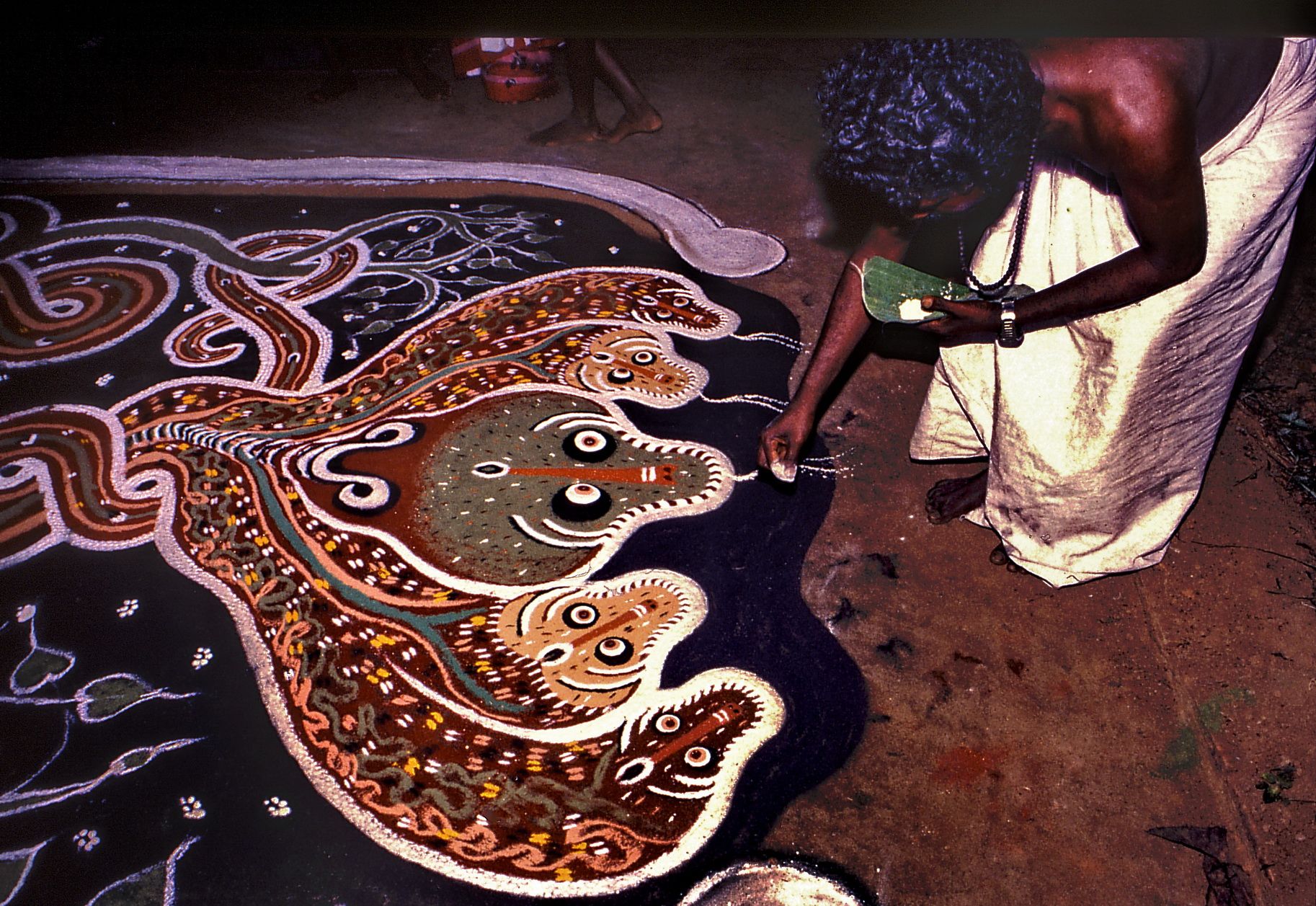
Sarpam Thullal, the snake dance
Kerala has the distinction of being inhabited by a great number of deities haunting the most secluded places. Is it the profusion of trees and bushes? Is it the thick and abundant land cover which allows creatures of all kinds to hide and reveal themselves only when it suits them? The Nâga are part of this parallel world and occasionally curse human beings. The wrath and malediction of the snake-gods manifest when the sanctuary is neglected or destroyed, when daily rituals are disregarded, or when an impure person enters the sacred precinct. The most common ailments are barrenness, infant death, poverty, blindness, leprosy, or other skin diseases. To prevent or remove a curse, a ritual of exorcism and possession called Sarppamthullal is led by the Pulluvan for families who own a snake sanctuary. It is the responsibility of the family community to preserve and honour the Nâga as they are the keepers of prosperity and ensure women fertility. By extension, all unfortunate events like fewer marriage proposals, poverty, professional failures, are attributed to the symbolic sterility of the entire community. The cure may be the prescription of a Sarppamthullal. This ritual can last 1, 3, 7, 9, 11 or 21 days depending on the seriousness of the problem to be solved.
Floor Paintings called kalam.
Stretching the powder with the back of the hand to outline a preliminary layout of the serpent-god, tapping a pierced coconut, filled up with rice flour to define the contours of the Nâga and interweave the coils, scraping, scratching, raking the surface to suggest flesh or scales, blending, flattening, printing; the preceding descriptions define the gestures used to draw the snake kalam.
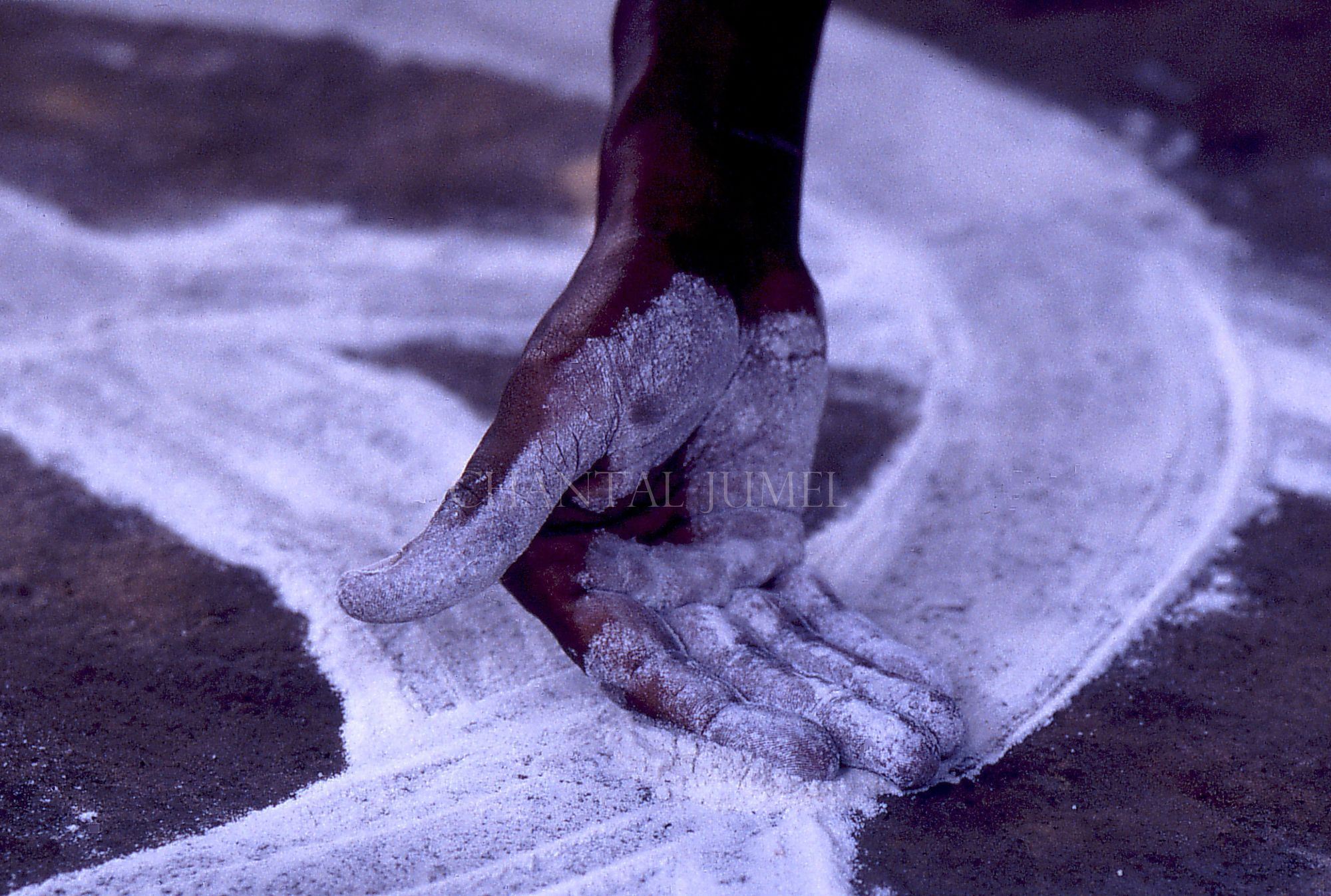
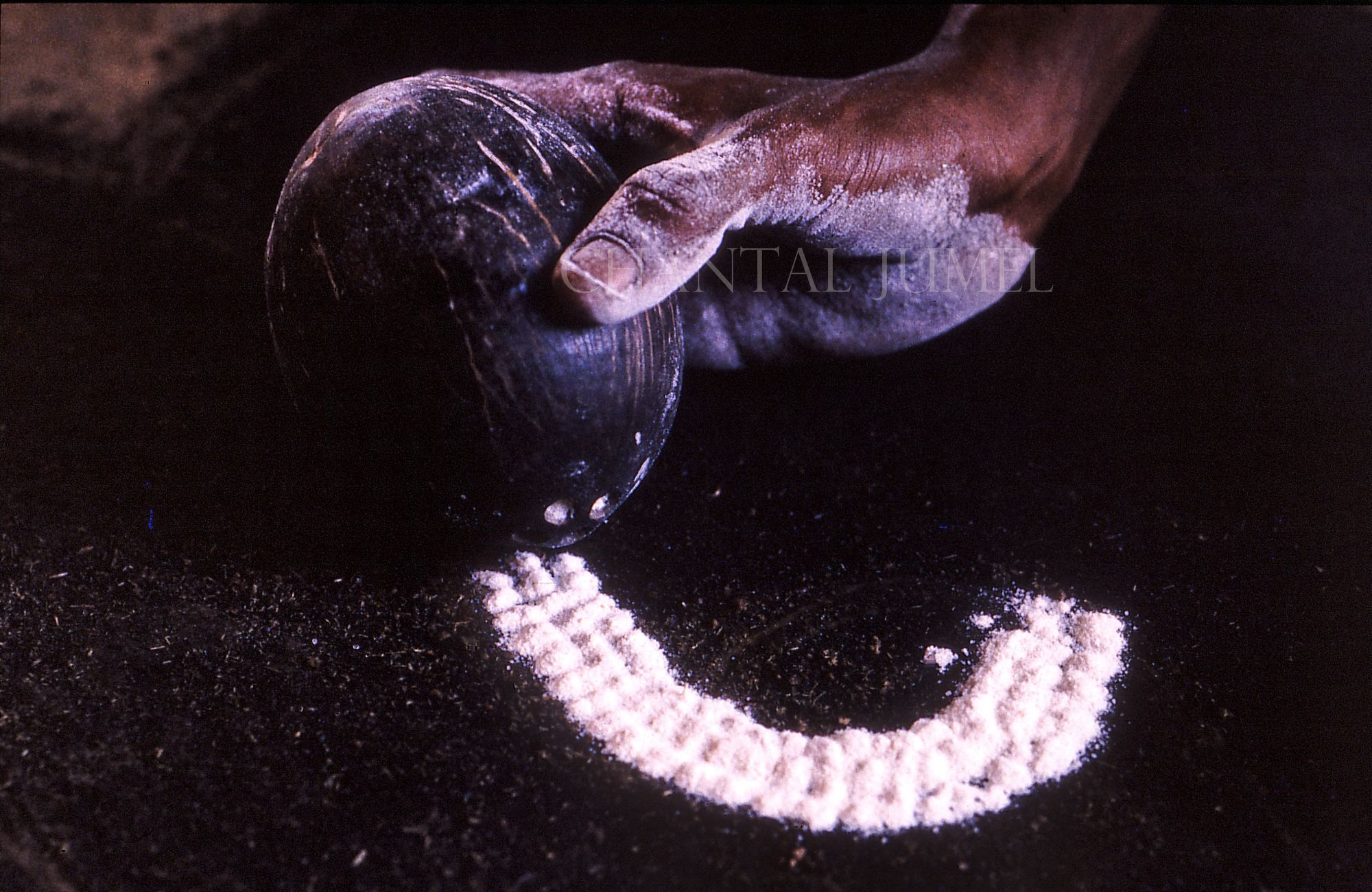
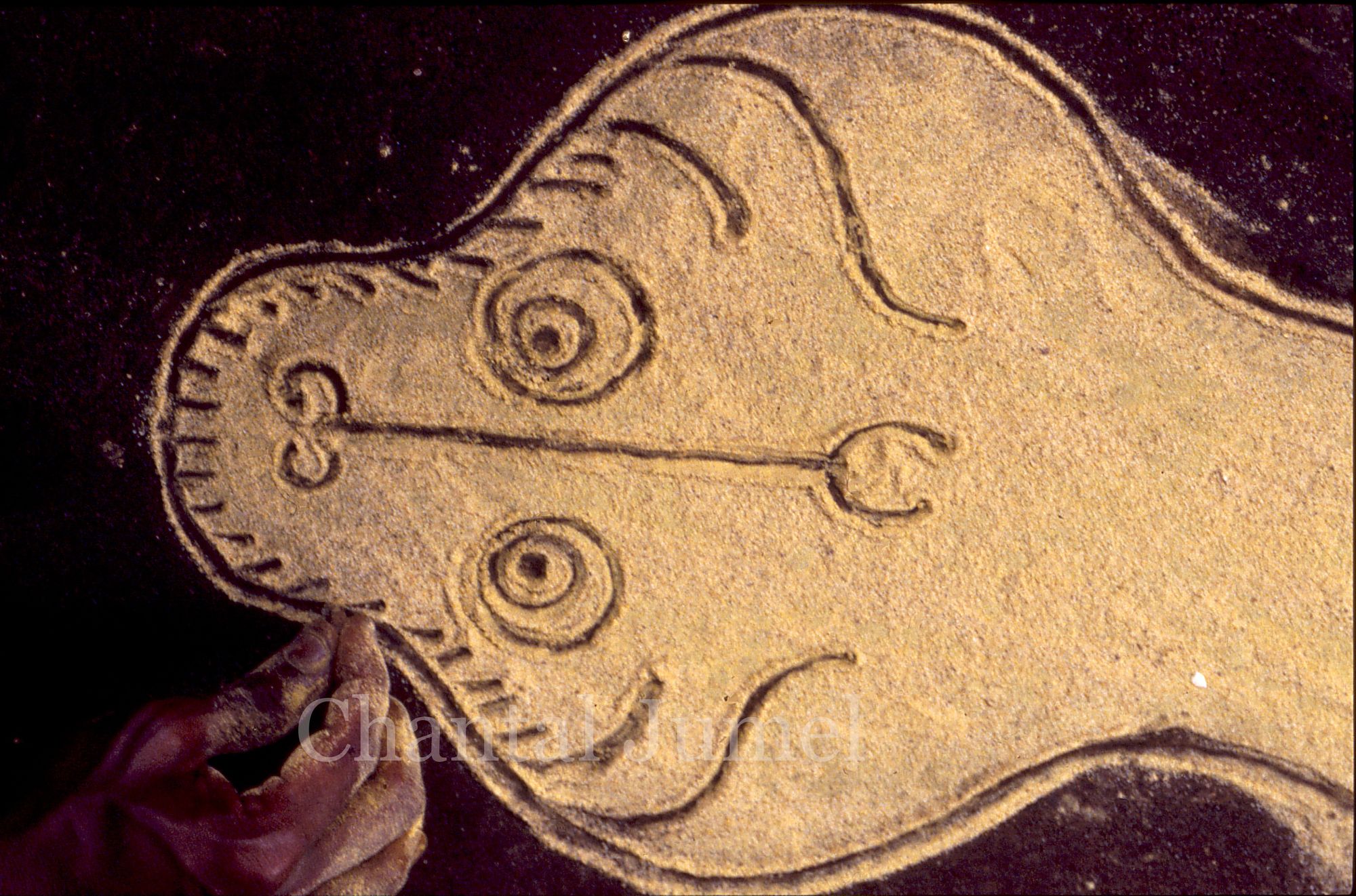
During my dance studies in Kerala, I attended one of the most unusual rituals. I was already interested in the Tamil floor painting named kolam but what I saw was beyond anything I had witnessed until now. In the backyard of the house, which served as a school, an immense floor fresco of a snake coiled around a tree was rising from the ground under the skilful gestures of several crouching men. Under a ritual canopy, vegetal fringes were swinging, birds cut and plaited with the tender leaves of a coconut tree seemed to be floating above the powdery interlacing that embraced each pillar of the central structure. The flickering glow of oil lamps hanging from long brass chains added mystery to the maze drawn on the floor. Little by little the eye became accustomed to dim light, and one could clearly distinguish the entwined coils of a serpent. Besides the domestic kolam, I was getting to know another form of ephemeral floor painting called kalam in Kerala. This is how, for many years, I travelled to temples and aristocratic houses to document a unique ritual art.
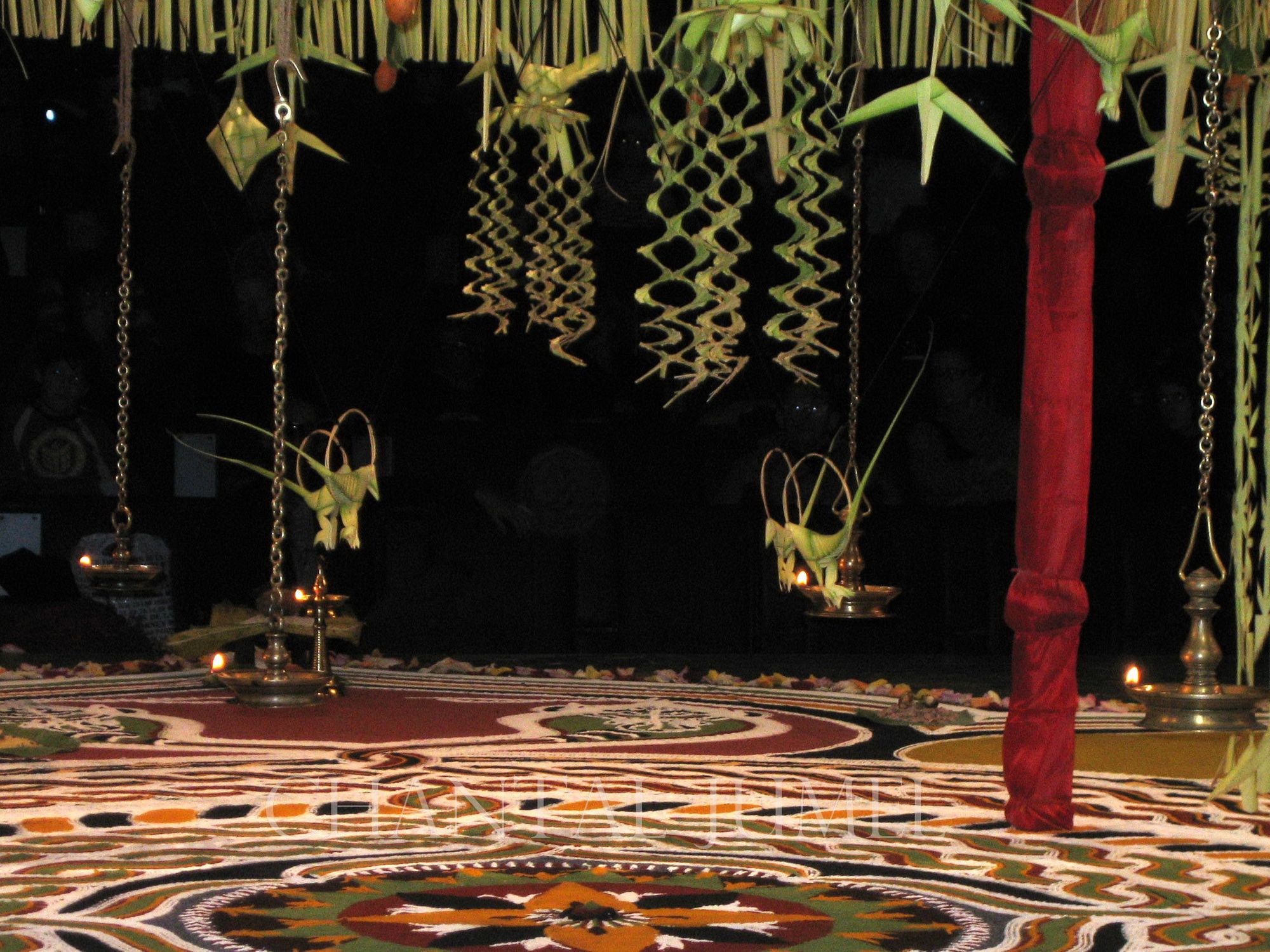
Drawing and colours
Many hand techniques exist but none are described in drawing treatises; the gestures are transmitted only by imitation and impregnation. The Nâga are represented either coiled around a tree, or in complex interlaces created from simple graphs, and ordered according to a definite pattern. The interlaces have names that make it easy to remember. Here are a few:
One or two knots serpent coils - Knots arranged according three, four, five, six, or seven lotus petals – Knots arranged in triangles or squares – Knots arranged according to the Cetti flower ( Ixora Coccinea) – Knots arranged to look like a kaiyala (literally a stone wall plastered with soil or mud) – Knots enclosing a Shivalinga – Knots aligned in eight directions to represent the eight Nâga – Knots coiled around an Al tree (Ficus Religiosa) or a Karimpana tree (Borassus Flabelliformis).
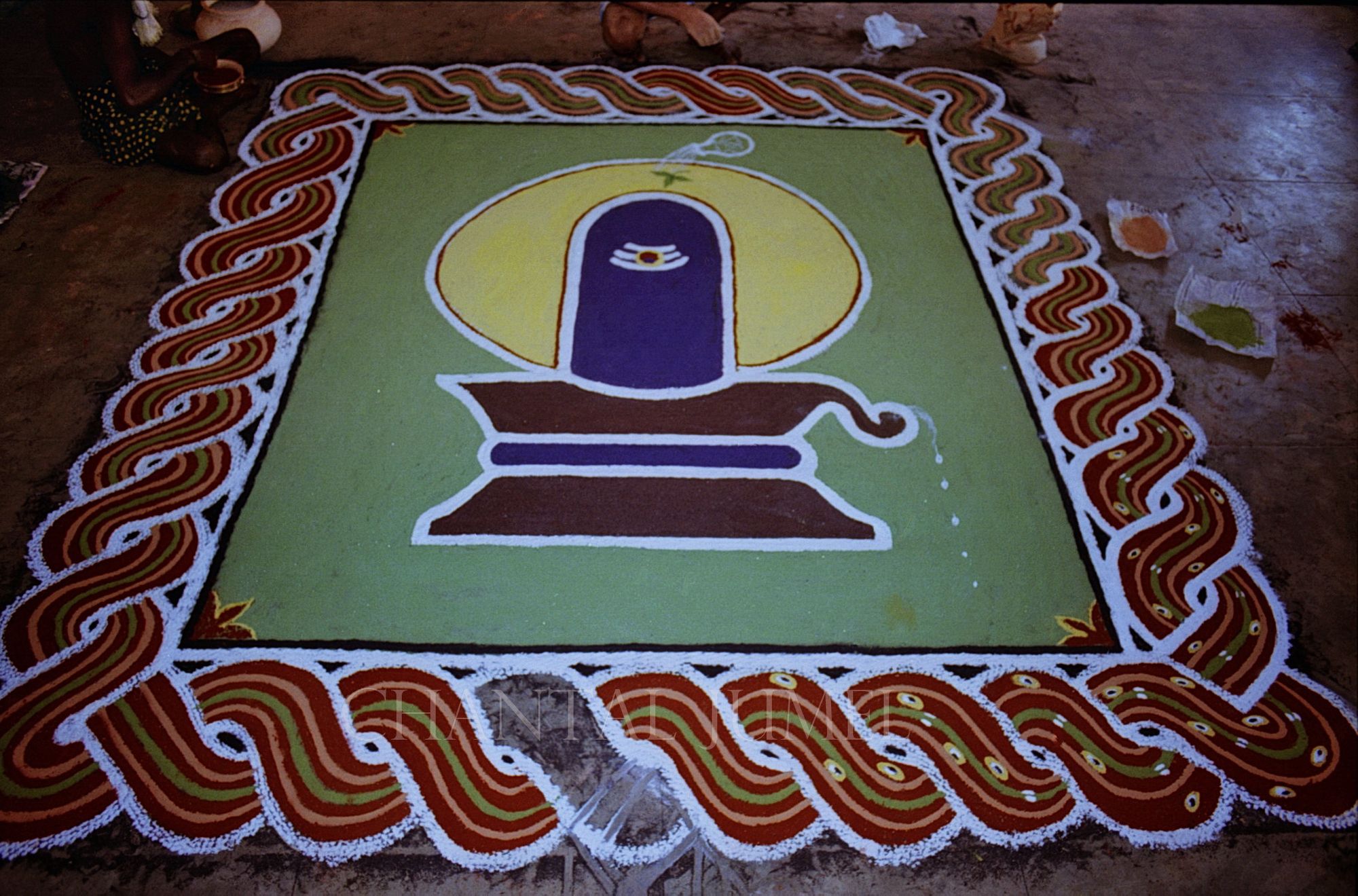
If these names reveal the general pattern of a Nâga (triangular, circular, square), they do not, however, give any indication of the number of knots and the way to interweave them. To memorize the drawings corresponding to each type of Nâga, the Pulluvan refers to verses that explain the process to follow.
“Meditate on the divine image, then sketch the body with black from the burnt rice husks. Then the contours of the body (coils) must be delimited with rice flour. The veins will be traced with the crushed leaves of the Mañjadi tree (Adananthera Pavonia). On either side of the green lines, a line will be drawn with brick dust or crushed tiles for the subtle channels (nâdi). Finally, the red colour will be applied to symbolize blood.”

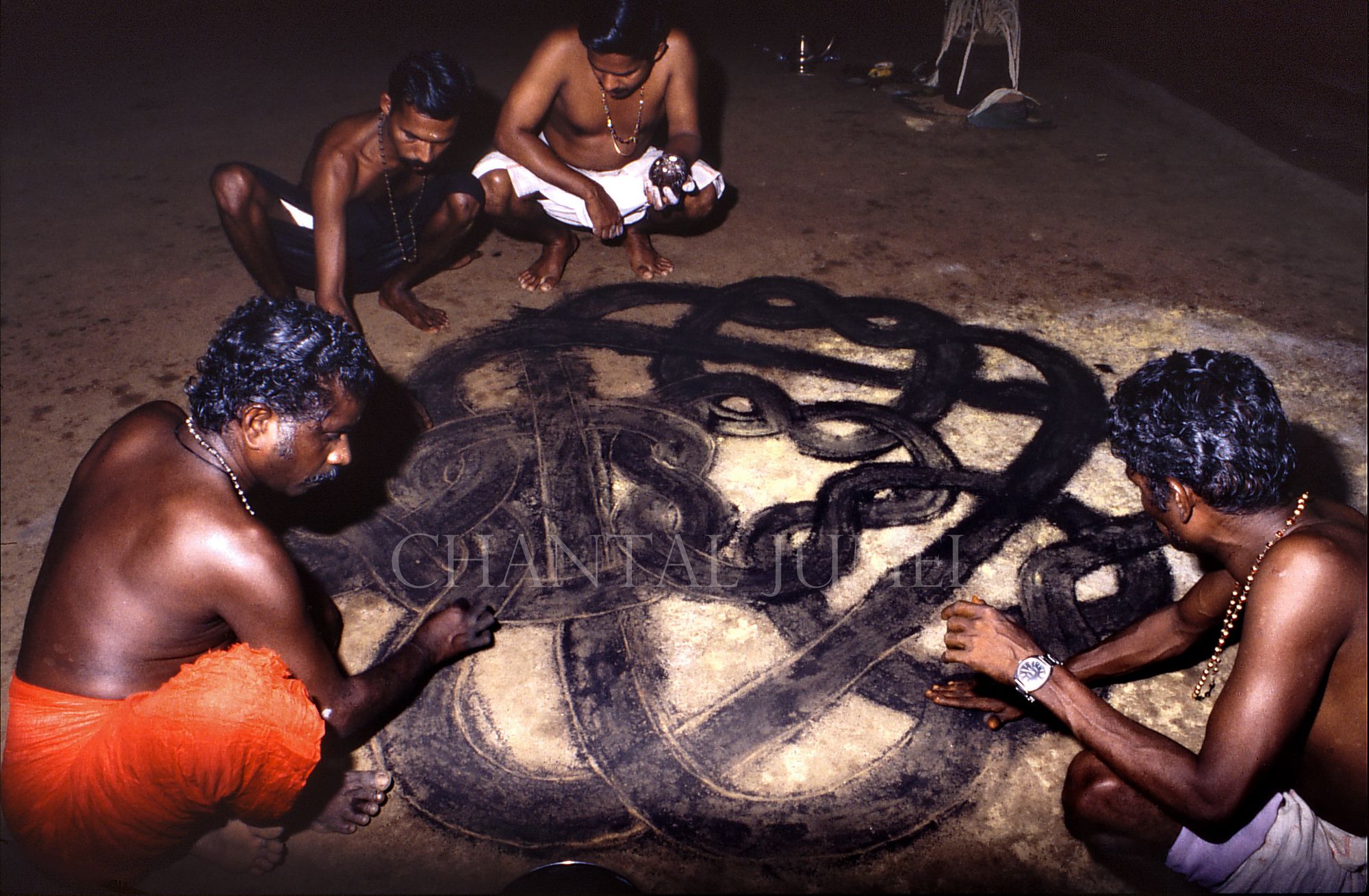

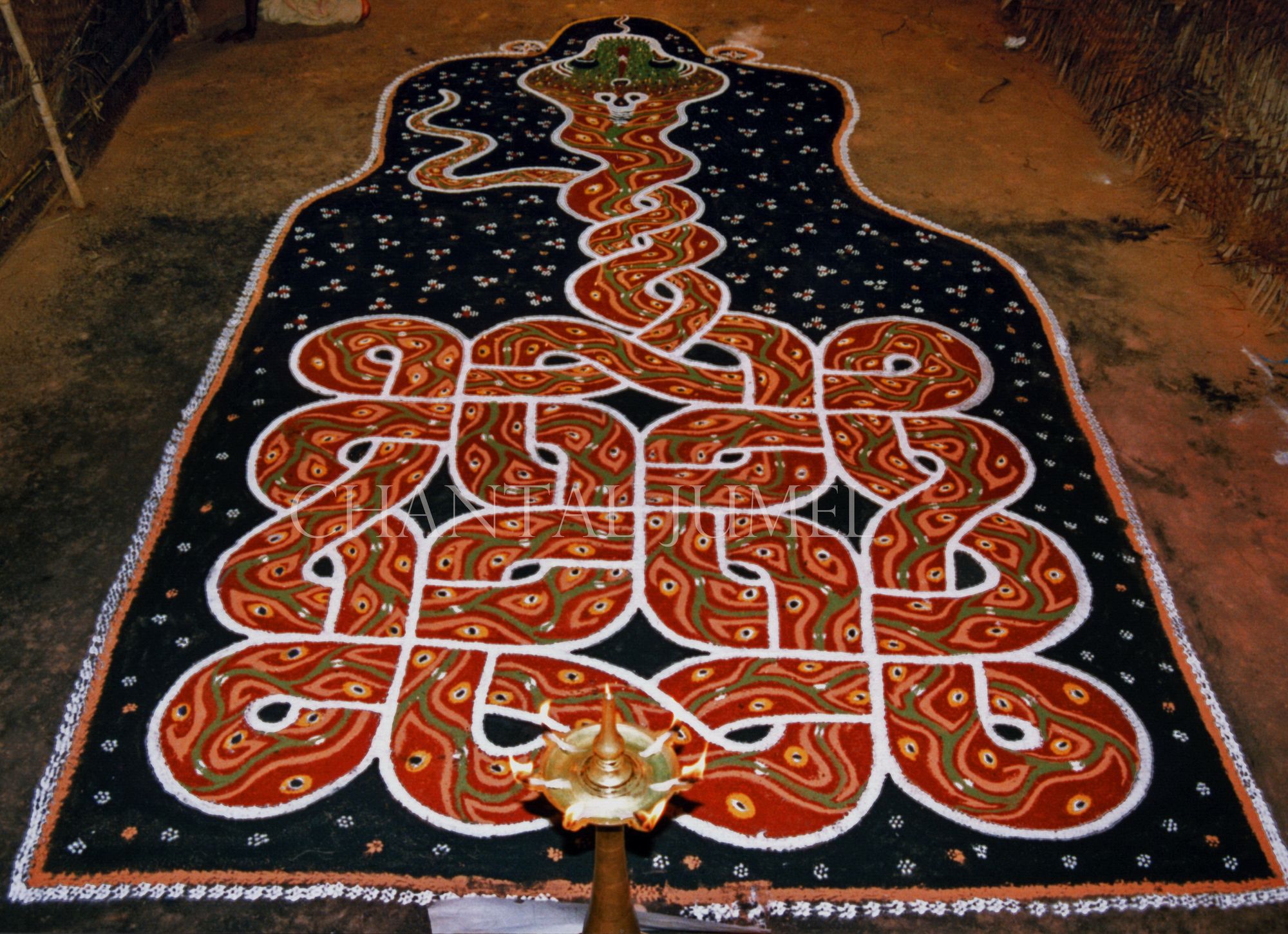
The article is a translated excerpt from my book : "Kolam et Kalam, peintures rituelles éphémères de l'Inde du Sud", Editions Geuthner, Paris 2010.
